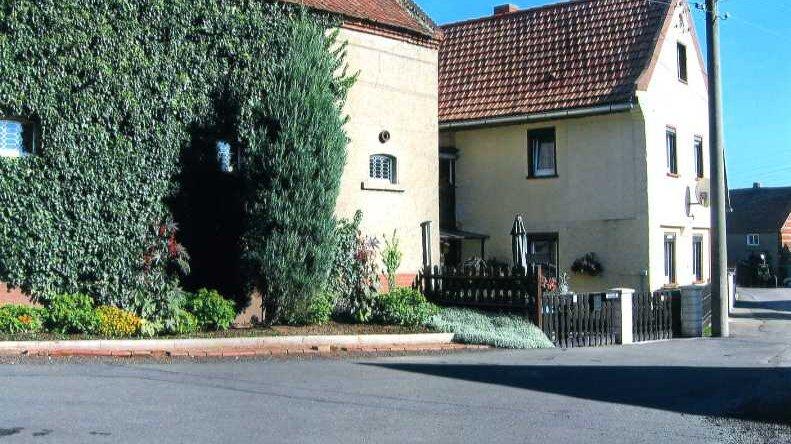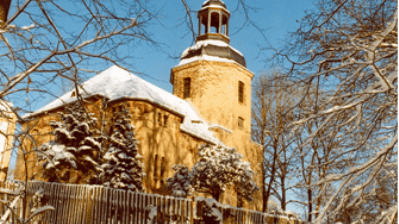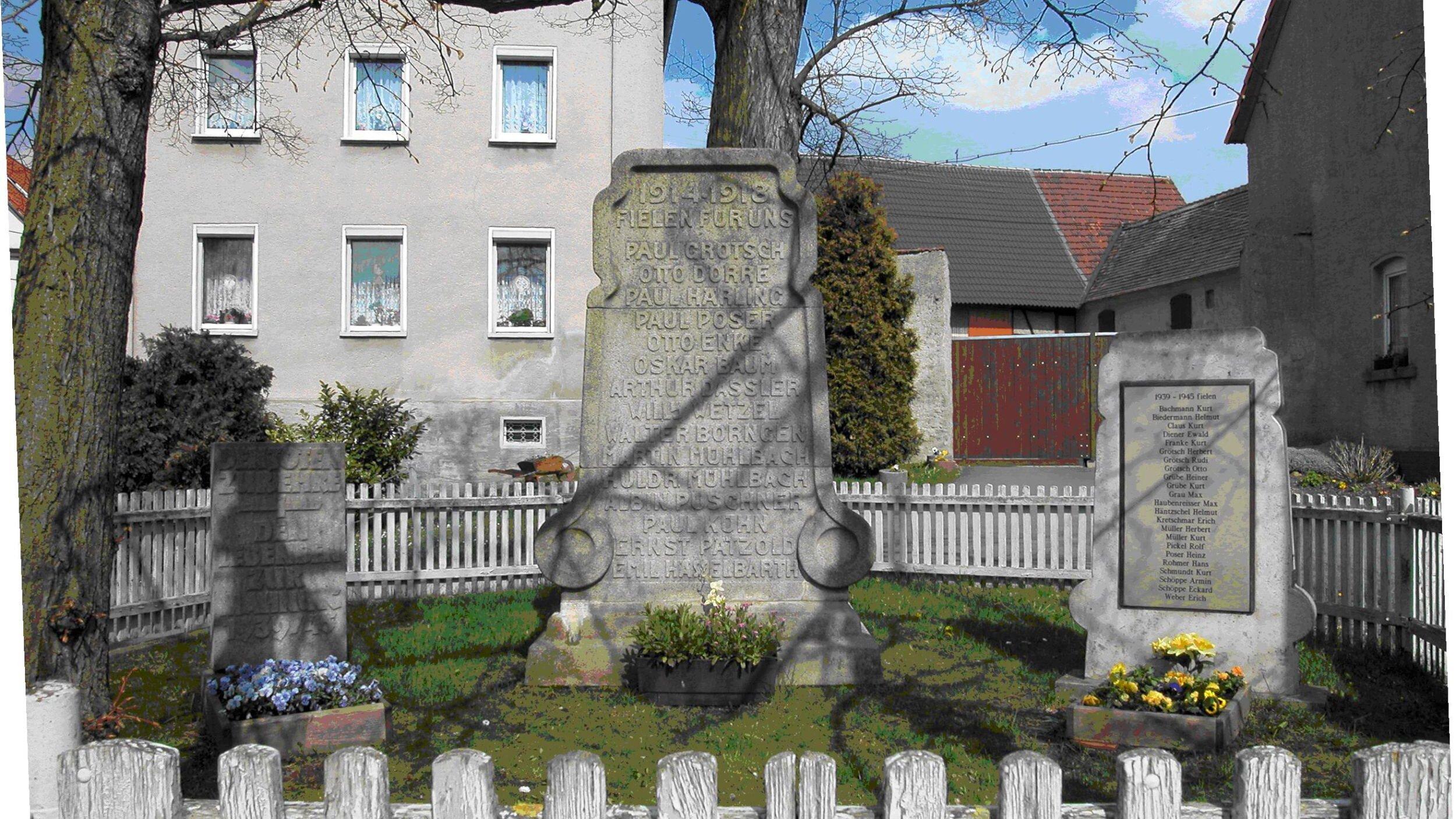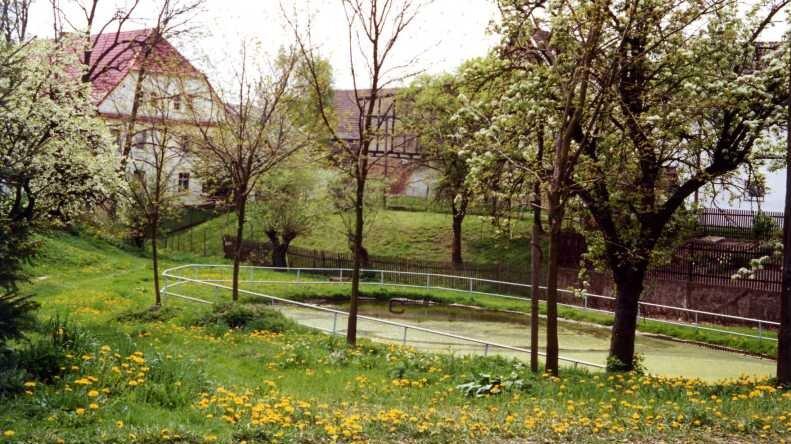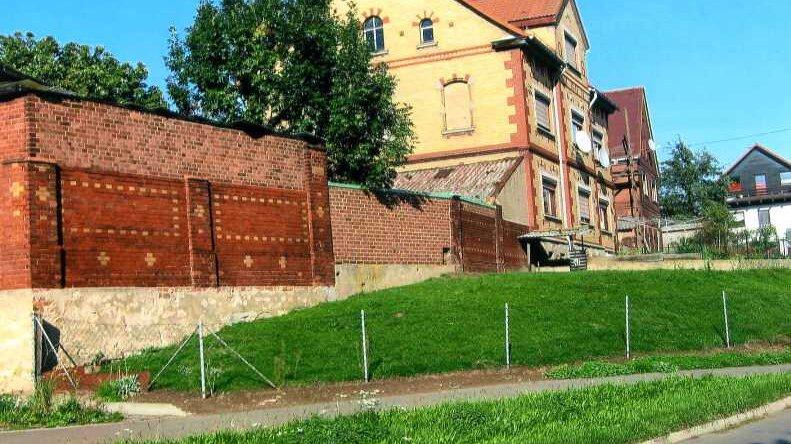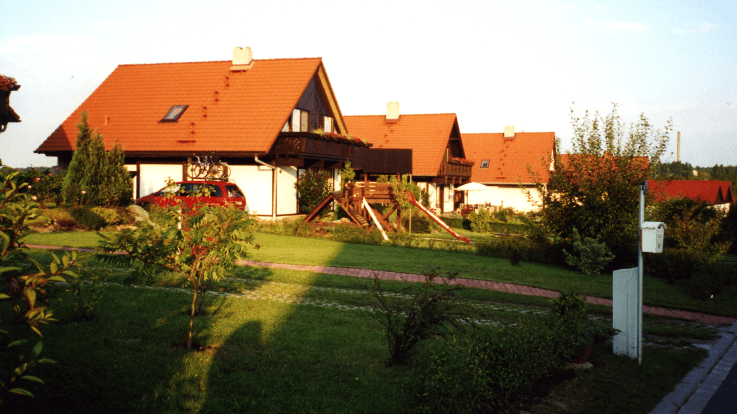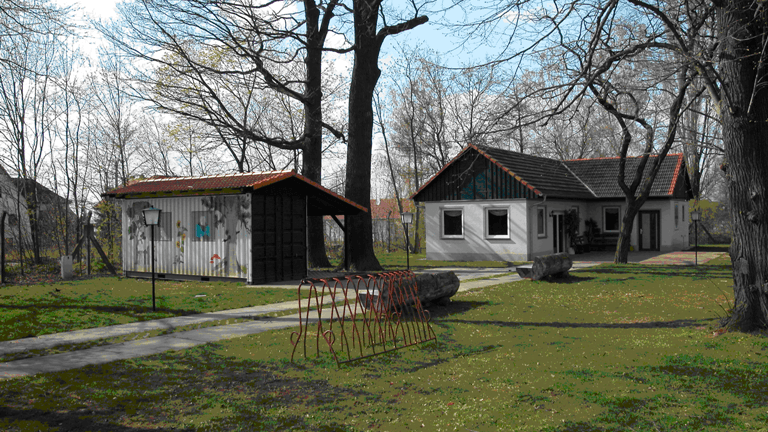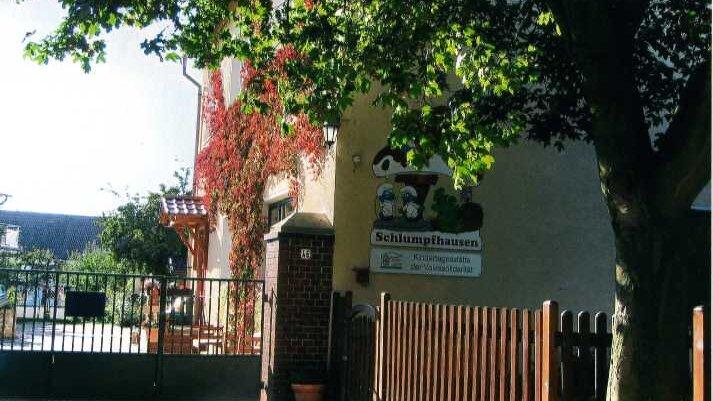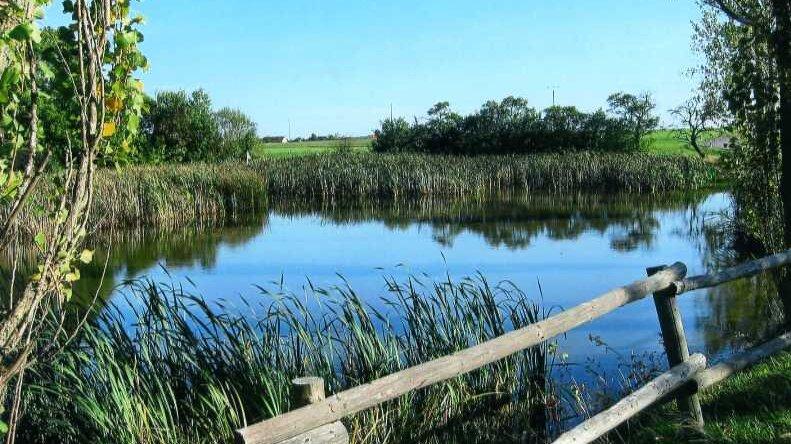District Roben
Data and facts
| Name of the district: | Roben |
| with the localities: | Roben, Rusitz, Steinbrücken |
| District of the city of Gera since: | 01.04.1994 |
| Surface area: | 1.182 ha |
| Population: (as at: 31.12.2022) | 694 |
Location and transport connections
| Location: | The district of Roben, consisting of the three former villages of Roben, Rusitz and Steinbrücken, is located on a plateau in the north-west of the town. Roben is bordered by the district of Aga, the "Elsterhänge" to the west and the town of Bad Köstritz in the district of Greiz. The slightly undulating plateau is predominantly characterized by agricultural use. In the northern part, there are large, contiguous areas of forest. |
| Utilization: | The existing, evolved village locations are strongly village-like in character and reflect the historical combination of agricultural and residential use in terms of design. The arable land is farmed by a number of part-time farmers and agricultural businesses. Small craft and service businesses are located here. |
| Landscape and site design: | To the east of Roben is a morphologically varied area, to the west a wooded slope edge. The landscape is dominated by fields and meadows. The integration of the established villages into the landscape is given due to the strong greening with trees and shrubs typical of the landscape. The street structure has a village character. There are many agricultural farms in the districts, such as four-sided farms. The residential area "Zu den Hopfenwiesen" in Rusitz and many newly built detached houses in Steinbrücken characterize new parts of both villages. |
| Transport connections: | Roben can be reached via the B2 or B7, the inner access is via municipal roads. Roben can be reached by public transport from the "Duale Hochschule" transfer point via bus route 228 operated by Regionalverkehr Gera/Land GmbH. |
School / daycare center / leisure facilities:
| Children's facility: | Children's facility: „Schlumpfenhausen“ Steinbrücken 46 |
| Carrier: Volkssolidarität Kreisverband Gera e.V. | |
| Sports fields/playgrounds/recreational facilities: | Freizeitanlage in Roben |
| Playgrounds in Roben, Rusitz und Steinbrücken | |
| Riding facility in Rusitz | |
| Worth seeing: | Memorial to the fallen of the two world wars in Roben |
| Parkanlage in Steinbrücken | |
| Clubs: | Dorfverein Gera – Rusitz e.V. |
| Reitverein Rusitz | |
| Feuerwehrverein Steinbrücken e.V. | |
| Dorf- und Feuerwehrverein Roben e.V. | |
| Church / cemetery: | in Roben |
History
Historie Roben
Author: Dr. Hagner, Udo
Roben
Roben itself was mentioned indirectly in 1146 through the first mention of a nobleman, Sigibert von Robin, who undoubtedly lived in the castle, which is still preserved in rudimentary form as a rampart next to the church.
Roben originally had a manor. The extent to which it can be linked to the family of the Nobles of Roben (1146 - 1196 or 1371) remains unclear.
In the 16th century, the village was partly under the rule of the von Eichicht auf Langenberg and von Schauroth auf Steinbrücken families until the latter acquired it completely in 1609. As Roben's own outlying estate was dissolved in 1690, the village was subsequently subject to feudal relations with the Steinbrücken estate.
From around 1700 onwards, there was an increase in the construction of farms and houses with only a small amount of land. Since the Reformation, Roben was also the parish and school for Rusitz and Steinbrücken.
Remarkably, Roben has a number of direct and indirect connections to important figures in the history of art and science. The father of the important composer Michael Praetorius (born 1571, died 1621) worked as a priest in Roben from 1564 to 1569. At the same time, the family of the famous composer Heinrich Schütz (b. 1585, d. 1672) lived in Köstritz and also owned a piece of forest land in Roben. The Baroque composer Johann Friedrich Fasch (born 1688, died 1758) married a daughter of the then pastor Laurentius in Roben in 1717, who also became the ancestor of the famous animal researcher Brehm through another daughter.
At the end of the 18th century, the three villages of Köstritz were probably one of the hiking destinations of the composer Georg Anton Benda (born 1722, died 1795), who last lived in Köstritz. The pastor's son Heinrich Gottfried Thamerus (b. 1757, d. 1830) was known throughout the region as a physician, physicist and mineralogist.
The Köstritz pastor Julius Sturm (b. 1816, d. 1896), who has since been "rediscovered" as a poet, married in Roben in 1853. And finally, Prof. Richard Hauschild (b. 1901, d. 1972) spent his youth in Roben and became famous as an Indologist and Sanskrit scholar.
Steinbrücken
Steinbrücken, first mentioned in 1364, was recognizably shaped by the estate from the 16th century until 1945. It belonged to the von Schauroth families (1534 to 1682), the Counts of Reuß-Schleiz and Köstritz (1682 - 1719, 1801 - 1812), Solms-Tecklenburg (1719 - 1743), Reuß-Obergreiz (1743 - 1801), the von Metsch/von Brandenstein/von Tschammer and Osten families (1812 - 1932) and finally the Gera industrialist family Remy (1932 - 1945).
In addition to the few remaining farms, various small houses of estate servants and craftsmen were probably built from the 18th century onwards.
Rusitz
Despite its Slavic name, Rusitz was first mentioned very late (1533). It is possible that the village was only newly established in the 15th century in place of an early deserted village and was the smallest village in terms of the number of houses and inhabitants until the fall of communism and was clearly distinguishable from the two villages by its mostly large farms.
After the fall of communism in 1989/90, a new development area "In den Hopfenwiesen" was built in Rusitz, which doubled the population of the village.
Expectations and hopes regarding the economic development of the area were not fulfilled, also in so far as they were linked to the incorporation and hoped for economic impulses from this. The project for a brickworks near Rusitz, which was under discussion for a while, was abandoned early on, perhaps also because of the sometimes seemingly adventurous infrastructural aspects, such as a planned cable car to transport the raw materials (clay) from Lessen to Rusitz. The industrial park in Rusitz, which has already made headlines in the media on various occasions due to its controversial privatization, on the site of the former industrial cattle fattening plant, has undoubtedly not fulfilled all hopes and expectations. Even today, it is not even close to being fully utilized, and a number of resident companies have already fallen into bankruptcy or insolvency and ceased to exist.
A project to build a larger play and leisure park in the area did not make it past the initial planning stage and probably failed due to the financing concepts.
The only economic concept that seemed to come to fruition for Rusitz is the one that was pushed forward against the declared will of the town administration, the town council and, in the meantime, probably almost most of the inhabitants of the village, and which envisaged a wind farm to the west of the village. The construction of a wind turbine was pushed through despite this opposition. In the context of the change in energy policy, a revival of this project cannot be ruled out.
Residential areas are currently only designated in Steinbrücken. A private initiative regarding a small residential area in Roben as an extension of the settlement on the road to Rusitz failed due to the lack of designation in the development plan. A second construction phase originally planned in the Rusitz development area is no longer on the agenda. Construction activity in all three villages is therefore limited to individual properties to fill gaps and the renovation of existing buildings.
There were different developments for the villages in terms of monument protection. Unfortunately, it was not possible to save the estate in Steinbrücken, including the manor house. Although it could have been purchased for a symbolic price, there were no seriously interested investors to be found. As a result, the entire complex was demolished, and with it an ensemble that had shaped the village of Steinbrücken for centuries disappeared. Only the trees in the former park remain today as a reminder of this traditional site.
For the resulting large commercial wasteland in the middle of the village, there are only ideas for designing it as a home site. This has since been partially realized with a number of owner-occupied homes.
A specially founded association for the preservation of local historical buildings and monuments has been working intensively on the renovation of the church in Roben, as the common church for all three villages. In cooperation with the parish of Roben, the former Evangelical Lutheran parish of Großaga-Roben, the Gera district church office and the Gera municipal administration, the association succeeded in initiating and ultimately initiating the urgently needed conservation and renovation measures. Otherwise, the church would probably not have been structurally salvageable in a few years' time. Initially, work began on renovating the tower and drying out the building. However, the future of the project depends in particular on the further granting of funding for the preservation of historical monuments, as without this it would appear impossible to continue the renovation due to the small population and lack of potential sponsors. One problem that emerged was that although local tradesmen were among the initiators, they were not considered when the work was awarded. Instead, a dumping offer was accepted from a non-local company for the roofing, whose subsequent insolvency brought the construction project to a temporary standstill once again.
Despite all the adversity, resistance and seemingly years of inactivity, the support association succeeded in gaining broad public acceptance for this building project, which reached far beyond the parish of Roben itself. The "Knopffeste" (knob festivals) introduced specifically for this purpose (removal or re-installation of the tower knob), which were organized under the direction of the parish, also met with broad cooperation and a positive response.
Thanks to a generous donation from a former Roben family, the association was able to erect a memorial to the fallen of the Second World War next to the existing memorial stones to the fallen of the First and Second World Wars. A similar project is currently underway for Steinbrücken.
Cultural life in the three villages is shaped in particular by the local associations and clubs and their activities and festivals. In Steinbrücken, the volunteer fire department and the fire department association, which organize the annual maypole planting and the park festival, are particularly noteworthy. In Steinbrücken, the Volkssolidarität not only runs the "Schlumpfhausen" children's facility with crèche, kindergarten and after-school care, but also offers sports activities on these premises.
In Roben itself, there is the aforementioned association for the preservation of local historical monuments and buildings, whose commitment to the renovation of the church in particular has already been acknowledged above, a "VW Team Roben" association, the volunteer fire department and a village and fire department association. The latter in turn organize the annual maypole planting and a street festival on 3 October. A private initiative in the lower village organizes its own small "Lindenfest" there. The inn, which is currently being renovated, offers bowling and for a time also hosted well-known dance and discovery events. In 1996, Roben celebrated its 850th anniversary and in 2021 its 875th anniversary, both of which were very well received in the village and far beyond. On this occasion, three local chronicles were published for the first time since 1902: a chronological list by the Gera town archive (1996) and a more comprehensive, factual presentation in book form by local resident Udo Hagner (850 Jahre Roben - Chronik der Gemeinde, Gera 1996.). A second volume by this author, now as the main author and editor, was published in 2021 (Streiflichter aus der Geschichte von Roben, Rusitz und Steinbrücken, Langenweißbach 2021) and, in addition to the history of the church and school, the art history of the altar and an outline of medical care in the 20th century, also includes the history of Rusitz and Steinbrücken, which has remained largely untouched until now. Both books have also attracted national attention.
Since 1996, an annual village festival has been held in Rusitz, originally under the motto "Old Rusitz meets New Rusitz", which served and still serves to bring the residents of both residential areas together.
Other groups of people have formed and continue to exist here as citizens' initiatives regarding the specific problems of the Rusitz development area (e.g. regarding the road connection and road expansion charges or against the threat of a wind turbine being erected) and see themselves as such.
